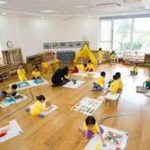Many studies have focused on professional learning communities, including defining them, finding aspects that promote them, and dimensions that explain them. The results collectively pointed towards PLC’s having a positive impact on both teaching practice and student achievement (Vescio, Ross and Adams, 2008). In a review of studies by Vescio, Ross and Adams (2008), they found that teachers support and value PLC’s in their schools. The teachers became more student centered and the teaching culture develops and improves because of the increase in collaboration between the teachers. They also found that teachers feel more empowered and value continuous learning. With regards to student achievement, Vescio, Ross and Adams (2008) reviewed literature that verifies that students improved in achievement scores over time.
In another study done in a Chinese setting, Lee, Zhang and Yin (2011) found that collective learning and application and supportive conditions (two PLC factors) have positively impacted the teachers’ commitment to students. They also found that PLC that promotes faculty trust in colleagues could significantly affect teacher collective efficacy on instructional strategies.
Professional Learning Communities are based on 6 dimensions as per the constructivist theory. These are shared beliefs, mission and vision, shared leadership, supportive structures, supportive relational conditions, collective learning and peer sharing towards the school improvement (Hord, 2009). The words themselves, professional learning communities denote that the community must be involved to ensure that learning is happening. To further explain these dimensions and community members, this proposal will be addressing the 2 community members of the school separately but not exclusively as they depend on each other to make a successful professional learning community.
The Principal
The principal’s role in his/her school is detrimental to forming a successful PLC. In a review of literature done by Stoll (2006), it was found that principals are an important resource in founding PLCs especially in terms of shared leadership and the principal’s commitment. It was also found that the quality of the principal has an influence on the nature of the school culture which is the basis for changing towards professional learning communities. In direct reflection to the current situation at a private school in Al Ain (APS), the principal is far from fulfilling the needs of leader that invokes PLC in her school. The main target of the principal should be to support the learning of the students and the ability of the teachers to teach. Recently, Abu Dhabi Educational Council (ADEC), a governing body, had visited APS and highlighted that some important points needed to be improved. These include raising the students’ progress and attainment and resolving discrepancies between quality of teaching and learning. These factors must be the sole purpose of the principal.
The first step is to define the schools mission and vision and review them to meet the current needs of both the school and the community. This should be done collaboratively with the teachers to ensure ownership and involvement. The steps should include brainstorming sessions and putting together the development goals within these meetings. Teachers will have an opportunity to develop and name key performance indicators that they feel they could reach (attain). From their knowledge of the students, they will also make sure that these KPI’s are specific. Together as teams and using directionality of all leader structures that determine the measurability and the time frames (SMART KPI’s). Communicating and developing these goals with the teachers will create a sense of responsibility towards the team and will ensure that everyone is on the right track. All members will consciously be making everyday decisions that are aligned to their goals.
The second approach should be about developing both the teachers and the middle leaders. Dispersal of leadership should not only be about designating tasks, it should also include supporting all leaders by continuously assessing their needs and providing them with formative feedback. The principal must hold continuous meetings to ensure that they are all consistently on the same ‘page’ and that the team approach is always there. When the leaders are learning and cascading to teachers, it creates a culture of continuous learning, for teaching staff that is in turn tied to student learning and other school goals. As Heads of subjects and teachers collaborate they become engaged in creating best practices that impact the whole school ultimately.
The third approach should be about developing teachers. At APS, the focus of developing teachers should be through a more targeted Professional Development Program (PDP). Teachers are currently attending general sessions that may or may not be implemented because it does not target the needs of the teacher. It is very similar to matching activities to different need of students, teachers need differentiated sessions. Teachers should have the opportunity to define their needs through self-assessment techniques. A very important strategy is to have the teachers set their own criteria for what they perceive an ‘outstanding’ teacher should have. They can be given the ADEC inspection framework as a guideline. They can then discuss and collaborate to come up with an end product that they can use effectively to assess themselves. As colleagues, including leadership, they can also peer observe each other and provide each other with formative feedback to define their strengths and weaknesses. The principal in turn, must ensure a structure where these weaknesses are developed through mentoring, professional development sessions, or any strategy that can support them.
The fourth strategy that a principal must pay attention to at APS is that the structure and culture of the school is aligned to the needs of the goals set earlier. Teachers must feel both accountable and supported. The principal at APS is more into accountability which creates a high pressure atmosphere that often results in ‘burning out’ of teachers. Setting up of incentive programs where teachers are motivated to not only perform at the best of their abilities but are also celebrated for their sharing. Teachers must feel that sharing will result in their advancement either monetary based or / and career based. In addition to this, principals should encourage teachers to set targets for themselves that include not only the school but a personal target (that affects their work). A strategy would be for the leadership to ask each teacher to set three targets, one linked to the school development plan, one linked to personal accomplishments for example pursuing a Masters’ Degree in Education and one innovative or research based. The last target would be linked to his/her class or subject. All three of these goals should be tied into the appraisal system of the teacher and hence achieving the continuous learning environment.
The Teacher
Although the principal’s role is extremely crucial in promoting a PLC in his/her school, the teacher’s role is equally important. In a study by Leclerc, Moreau, Dumouchell and Sallafranque (2012) it was found that one of the factors that impacted school progression towards being a PLC was teachers. The researchers examined 138 participants within 15 elementary schools in Ontario, Canada. The participants were undergoing semi-directed interviews which focused on them explaining the factors that they perceived, impacted becoming a PLC school. The researchers also observed collaborative meetings and group meetings. The results included the categorization of the schools into the initiation stage (first stage), implementation stage (intermediary PLC school) and the integration stage (PLC school). By reflecting upon the APS school, the placement of this school was in the initiation stage. The day to day operations do not reflect the mission and vision, there is minimal cooperation between teachers due to no time or structures that promote this cooperation and the key decisions are made by the principal. In addition, the academic team do not use correct data to measure the impact or effectiveness of their programs on student progress and attainment. The study also indicated what the integration stage teachers had implemented to become PLC schools.
The first strategy that should be implemented by APS teachers is that they must start to take the initiative and commit to the progress of the school. Teachers at APS, may feel burnt out or over- burdened from duties but they also lack the initiative to progress. Instead of only presenting problems, they could start recommending solutions. This allows them to show leadership and share pedagogical knowledge around the school. It also encourages other teachers to start taking an initiative especially when these teachers are motivated and celebrated for taking these initiatives. At the same time, when the principal stars seeing and experiencing these factors, she would also start trusting the decisions of these teachers and most likely will start sharing her decision making duties.
The second strategy encumbers the focus of the teachers’ concentration. Teachers at APS are more focused on questions that promote a negative impact on others surrounding complaining about long hours or salary structures. However, in a study by Leclerc, Moreau, Dumouchell and Sallafranque (2012) it was found that teachers in the integration schools focused more on student learning. Teachers at APS, must start asking questions that stimulate discussions amongst each other and leadership about student progress and attainment. Teachers should discuss instructional strategies, assessment strategies and curriculum structures amongst themselves. Recently at APS, the Vice Principal met with the teachers to discuss certain low ability students and to her surprise most of the teachers informed her that this had not happened at APS before. Teachers could be trained by the leadership on what to discuss and the leadership should always aim to steer these discussions towards student progress and achievement. Teachers should have regular meetings to discuss the data that they have collected regarding students and discuss what and how the best strategy is to advance these students.
The third strategy found in integration schools is promoting the sharing of best practices between each other. Teachers must be ready to share, receive constructive criticism and evaluate others. They must be honest, professional and willing to share. The culture of being able to go to a colleague when needed creates a sense of security among teachers and impacts their pedagogical knowledge over time. At APS, teachers must start peer observing each other with a more objective way of thinking. After brainstorming together on the observation factors they would like to find in ‘outstanding’ classes, teachers must then use this tool to enhance their understanding of these factors or to learn from others whom implement these factors. The teachers should be exchanging experiences, questioning each other, and learning together. This shared and collaborative view will directly impact students who will then start using these same skills amongst themselves. Within this strategy, it is equally important that teachers share their expertise. For example, a teacher at APS, has achieved above level outcomes when it comes to creating discussion based tasks within her classroom. She should be confident enough to invite other teachers to observe her with regards to her expertise and discuss with them after.
Discussion
Principals and teachers have an equal responsibility in promoting a PLC in their school. The principal especially must create structures that promote a shared collaborative culture and counter the isolation of teachers. Principals must provide support, time, directionality and resources to all staff to ensure they are being collaborative during all of their encounters. This should then be implemented by teachers and cascaded to the students. Students should not only be lectured on working amongst teams, they should be witnesses to such structures and experiences. Principals should also share his / her vision that is based on data and observations to all stakeholders. He or she should also share and distribute leadership to build on experiences and promote a learning culture.
Leaders and teachers should also be collectively striving for student success. They should be collaborating together and using the data collection and analysis to move forward planning and instruction amongst each other and hence, the progress of student achievement. They should also share their best experiences amongst each other to enhance a climate of willingness to share and benefitting from each other’s expertise. Peer observations and modelling should be an embedded culture amongst the school culture to allow teachers to discuss their practices and enhance their pedagogical knowledge.
All in all, the attitudes and culture of APS must be enlightened through showing them multiple studies of different schools that have impacted students’ achievement from this practice. They should also be shown how much of a relaxing atmosphere the school becomes when everyone is learning from the other and most importantly that however a teacher may know, there is always room to learn more.
Action Plan
| School Improvement Goal correlated to PLC Focus: All staff members will be included in the professional learning community initiative to increase collaboration amongst teachers and student | |||
| Data used to determine PLC Action Plan Goals: Appraisal Data Analysis, Student Progress Reports, Teacher Observation, Inspection Report, School Self Evaluation information, Curriculum Review Reports, Teacher Surveys, Parents Satisfaction Surveys, Student Surveys, Policy analysis, Minutes of Meetings | |||
| Action Plan Goal | Who is responsible? | Resources Needed | Timeline/Target Dates |
| Goal 1: Review Mission and Vision based on latest ADEC inspection collaboratively | Principal | Meeting Time: 5 hours
Inspection Report Department Action Plans Teacher Surveys Parents Surveys |
Start Date: 8/1/2017
End Date: 22/1/2017 |
| Goal 2: Review School Development Plan based on latest inspection and Self Evaluation collaboratively | Vice Principal | Meeting Time: Approximately 15 hours
ADEC Report Department Action Plans Teacher Surveys Parents Surveys |
Start Date: 22/1/2017
End Date: 12/2/2017 |
| Goal 3: Every teacher will have a targeted Professional Development Plan including 3 targets linked to appraisal | Teachers | Meeting Time: Approximately 15 hours
Department Action Plans Observation Data Appraisal Forms |
Start Date: 22/1/2017
End Date: 12/2/2017 |
| Goal 4: 1 Target of appraisal must be a teacher initiative in developing the school | Teachers | Professional Development Plans
Department Action Plans Observation Data Appraisal Forms |
Start Date: 22/1/2017
End Date: 12/2/2017 |
| Goal 5: An incentive program is linked directly to outstanding teachers to promote teacher initiatives – done by teachers | Principal and School Leadership Team | Appraisal Forms
Incentive Policy |
Start Date: 12/2/2017
End Date: 26/2/2016 |
| Goal 6: All new teachers will be paired with a mentor to ensure sharing of best practices | Teachers | Mentoring program
Mentoring time: 5 hours per week |
Start Date: 12/2/2017
End Date: 26/2/2016 |
| Goal 7: Decrease school day for students (35 minutes) to enhance meeting times to share best practice | Vice Principal | Meeting Time: Approximately 10 hours
Parent letters Parent Surveys |
Start Date: 12/2/2017
End Date: 26/2/2016 |
References
Hord, S. M. (2009). Professional Learning Communities: Educators Work Together toward a Shared Purpose. Journal of Staff Development, 30(1), 40-43.
Leclerc, M., Moreau, A. C., Dumouchel, C., & Sallafranque-St-Louis, F. (2012). Factors that promote progression in schools functioning as a professional learning community. International Journal of Education Policy and Leadership, 7(7).
Lee, J. C. K., Zhang, Z., & Yin, H. (2011). A multilevel analysis of the impact of a professional learning community, faculty trust in colleagues and collective efficacy on teacher commitment to students. Teaching and teacher education, 27(5), 820-830.
Stoll, L., Bolam, R., McMahon, A., Wallace, M., & Thomas, S. (2006). Professional learning communities: A review of the literature. Journal of Educational Change, 7, 221-258.
Vescio, V., Ross, D., & Adams, A. (2008). A review of research on the impact of professional learning communities on teaching practice and student learning. Teaching and teacher education, 24(1), 80-91.



